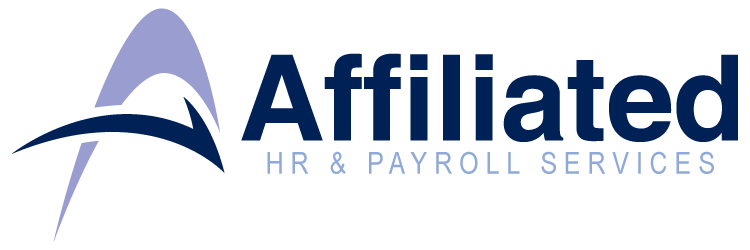
by Afilliated HR & Payroll | May 18, 2021 | HR Administration, Industrial Relations, Reminder
What are the penalties and costs for misclassifying employees?
The answer will depend on a number of factors, such as how many employees are misclassified, how much extra money they would have been paid if properly classified, and whether or not lawyers or regulatory agencies get involved.
Generally, if an employee goes to the federal Department of Labor (DOL) and claims that they’ve been misclassified, the DOL will investigate. If the DOL determines that an employee—or entire group of employees—should have been paid overtime but wasn’t, the employee will be owed up to two years’ worth of unpaid wages (or up to three if the misclassification was “willful”). The organization may also owe the employee or employees liquidated damages equal to the amount of money owed. So, if an employee should have been paid $2,000 in overtime, the organization may owe them $4,000. The organization would also owe the government taxes on those wages, as well as interest on the taxes.
Most states also have their own minimum wage and overtime laws, and often an organization can be held liable under both federal and state law, meaning the employee would be owed additional damages for violations of state wage law. And if you are in a state with late payment penalties, the organization could owe additional damages for not having paid all wages by the time they were due. There’s also a very good chance that the organization will be held liable for attorney’s fees—both the organization’s and the employee’s.
On top of the costs mentioned above, there are potential federal civil penalties of $2,074 per violation (generally one penalty per misclassified employee), state penalties (which will vary), and in some cases the potential for jail time. Finally, statutory interest may immediately begin to accrue on the amount owed.
Content courtesy of the HR Support Center – https://affiliatedpayroll.myhrsupportcenter.com

by Afilliated HR & Payroll | May 12, 2021 | Alert, Career Planning, Industrial Relations, Learning & Development
The pandemic taught business owners many unexpected things. Chief among them was the ability to adapt and change quickly. Businesses that preferred old-school, in-person commerce before 2020 were forced into a sudden shift during the first lockdown, adopting dozens of types of software for e-commerce and remote productivity practically overnight. And it worked out for most companies; concerns about productivity were largely unfounded. Now, as we emerge from various additional restrictions and lockdowns, attention is shifting to how and when to bring people back to the office.
The good news is that people are mostly optimistic about resuming normal activities, but there are concerns. Now is the time to address them.
Ironically, the ease with which companies transitioned to using technology is now cause for anxiety. According to a recent survey:
- 60% of employees are worried that automation will take away jobs.
- 39% think their jobs will be obsolete within five years.
- 48% believe business will shift away from a traditional employment model to a skills-based contract model.
- 56% think few people will have stable, long-term employment.
- 50% believe they’ve missed out on career opportunities or training due to discrimination.
These statistics are eye-opening and companies need to find ways to address the issues as they develop their strategic plans.
Upskilling
Upskilling is the process of learning new competencies that are relevant now and likely to remain relevant. An upskilling program must reflect the company’s learning and development strategy, but these modules represent a range of digital competencies: data, analytics, artificial intelligence and automation, blockchain, and design thinking.
Upskilling programs generally have one or more of the following components:
- Job rotation. Having employees perform different jobs in different departments gives them a hands-on view of how the company operates. It also provides the company with a clearer picture of the employee’s skills and aptitudes, which can be helpful when it comes to promotions or moving someone to a position that maximizes their potential.
- Job enlargement or enrichment. Enlarging or enriching someone’s job entails training them to perform additional tasks while at their current job.
- Peer training. There are two types of peer training. Peer coaching occurs when two or more people with different skills work together to solve problems. In the process, they learn from each other. Peer mentoring is a more formal program where an experienced employee teaches knowledge and skills to a less experienced employee.
Reskilling
Reskilling involves training employees on an entirely new set of skills to prepare them because their old role is becoming obsolete. For example, customer service representatives may be reskilled so they can respond to customer questions in a chat forum. At times, reskilling may involve obtaining a new degree or certification.
Diversity
Firm leaders need to be mindful of whom they are selecting for training programs, especially programs that are geared toward preparing employees for leadership roles. The first person you think of for training might be someone who attended your alma mater or someone you know personally because your children play together, but it’s important to extend the opportunity to everyone.
The pandemic has made people anxious about the future. Perhaps at some point in the future, Americans will be able to stop worrying about the next pandemic spike, losing sleep over their loved ones’ safety, or wondering when they will be able to find childcare or elder care. For now, it is enough to be mindful of employees’ wants and needs and to provide them with the skills and knowledge they need to do their jobs today and for the near future.

by Afilliated HR & Payroll | Mar 23, 2021 | Industrial Relations, HR Administration, Reminder
Do I need to include an EEO statement in our job postings?
Unless you are a federal contractor, you are not required to have an EEO statement in your job postings. Some employers who are not federal contractors opt to include an EEO statement as a sign to applicants that they take diversity seriously, although there is some question as to whether such statements actually deter people of color from applying.
Employers with federal contracts of $10,000 or more are, however, required to provide notice in job advertisements that qualified applicants will receive consideration without regard to their race, color, religion, sex, sexual orientation, gender identity, and national origin. If the federal contract is of $15,000 or more, the notice must also mention disability, and if the federal contract is $150,0000 or more, the notice must include status as a protected veteran.
Content courtesy of the HR Support Center – https://affiliatedpayroll.myhrsupportcenter.com

by Afilliated HR & Payroll | Mar 9, 2021 | Alert, Industrial Relations, Learning & Development
Under section 206(c) of the Taxpayer Certainty and Disaster Tax Relief Act of 2020, an employer that is eligible for the employee retention credit (ERC) can claim the ERC even if the employer has received a Small Business Interruption Loan under the Paycheck Protection Program (PPP). The eligible employer can claim the ERC on any qualified wages that are not counted as payroll costs in obtaining PPP loan forgiveness. Any wages that could count toward eligibility for the ERC or PPP loan forgiveness can be applied to either of these two programs, but not both.
If you received a PPP loan and included wages paid in the 2nd and/or 3rd quarter of 2020 as payroll costs in support of an application to obtain forgiveness of the loan (rather than claiming ERC for those wages), and your request for forgiveness was denied, you can claim the ERC related to those qualified wages on your 4th quarter 2020 Form 941, Employer’s Quarterly Federal Tax Return.
You can also report on your 4th quarter Form 941 any ERC attributable to health expenses that are qualified wages that you didn’t include on your 2nd and/or 3rd quarter Form 941.
If you choose to use this limited 4th quarter procedure, you should add the ERC attributable to these 2nd and/or 3rd quarter qualified wages and health expenses on line 11c or line 13d (as relevant) of your original 4th quarter Form 941 (along with any other ERC for qualified wages paid in the 4th quarter). You should also:
- Include the amount of these qualified wages paid during the 2nd and/or 3rd quarter (excluding health plan expenses) on line 21 of your original 4th quarter Form 941 (along with any qualified wages paid in the 4th quarter)
- Enter the same amount on Worksheet 1, Step 3, line 3a.
- Include the amount of these health plan expenses from the 2nd and/or 3rd quarter on line 22 of the 4th quarter Form 941 (along with any health expenses for the 4th quarter)
- Enter the same amount on Worksheet 1, Step 3, line 3b.
We understand this might be difficult to implement so late in the timeframe to file your 4th quarter return. You do not have to use this limited 4th quarter procedure. You can instead choose the regular process of filing an adjusted return or claim for refund for the appropriate quarter to which the additional ERC relates using Form 941-X.
Article from IRS.gov




